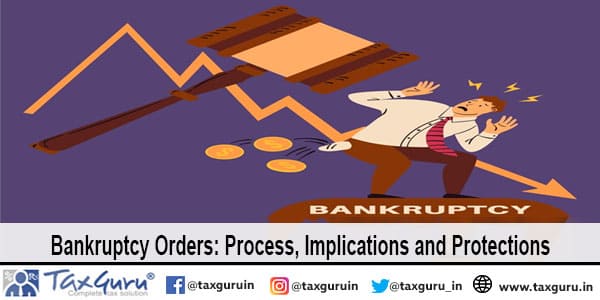Bankruptcy order
A bankruptcy order is a legal declaration issued by a court stating that an individual or organization is unable to repay their debts. This order is typically sought by creditors who have not received payment from the debtor despite various attempts to collect the debt. Once a bankruptcy order is granted, it initiates a formal process whereby the debtor’s assets may be liquidated to repay creditors. Additionally, the debtor may be subject to certain restrictions and obligations, such as providing financial information to a trustee and adhering to a repayment plan.
In today’s unpredictable economic landscape, individuals and businesses alike may find themselves facing financial difficulties that seem insurmountable. When debts become overwhelming and creditors are knocking at the door, seeking relief through bankruptcy may be a viable option. However, understanding the process and implications of a bankruptcy order is crucial before taking this significant step.
What is a Bankruptcy Order?
A bankruptcy order is a legal decree issued by a court declaring that an individual or entity is unable to meet their financial obligations. It is typically sought by creditors who have exhausted other means of recovering their debts. Once granted, the bankruptcy order initiates a formal process aimed at resolving the debtor’s financial affairs and distributing assets to creditors
How Does it Work?
When a bankruptcy order is issued, a trustee is appointed to oversee the debtor’s estate. The trustee’s primary role is to identify and liquidate the debtor’s assets, with the proceeds being used to repay creditors to the extent possible. This process is governed by bankruptcy laws and regulations designed to ensure fairness and transparency.
Implications for Debtors
For the debtor, a bankruptcy order carries significant consequences. It may result in the loss of assets, damage to credit rating, and restrictions on financial activities. However, it also provides relief from the burden of overwhelming debts and offers a fresh start once the bankruptcy process is complete.
Legal Basis
Under the jurisdiction of [insert relevant jurisdiction’s name] law, a bankruptcy order is issued by a competent court upon the application of a creditor or the debtor themselves. The legal foundation for bankruptcy proceedings is typically outlined in statutes such as the Bankruptcy Code or Insolvency Act, which delineate the rights and obligations of debtors, creditors, and trustees.
Initiation of Proceedings
Bankruptcy proceedings commence when a creditor files a petition with the court, alleging that the debtor is unable to pay their debts as they fall due. Alternatively, a debtor may voluntarily petition for bankruptcy if they acknowledge their financial distress.
Upon receipt of the petition, the court evaluates the merits of the case and may issue a bankruptcy order if satisfied that the criteria for insolvency have been met.
Role of the Trustee
Upon the issuance of a bankruptcy order, a trustee is appointed to oversee the administration of the debtor’s estate. The trustee’s duties include identifying and valuing assets, liquidating assets where necessary, and distributing proceeds to creditors in accordance with the law. The trustee acts as a fiduciary, bound by legal obligations to act in the best interests of the creditors and ensure equitable treatment for all parties involved.

Protections
For debtors, a bankruptcy order carries significant legal implications. While it provides relief from the burden of overwhelming debt, it also entails the loss of certain rights and privileges. Debtors may face restrictions on financial activities, such as obtaining credit or acting as a director of a company. However, bankruptcy laws also afford debtors certain protections, such as the automatic stay provision, which halts creditor collection actions upon the filing of a bankruptcy petition.
Conclusion: Navigating the Legal Landscape
In conclusion, navigating the legal landscape of bankruptcy orders requires a nuanced understanding of statutory provisions, case law precedents, and procedural rules. Whether you find yourself contemplating bankruptcy or involved in bankruptcy proceedings, seeking the guidance of experienced legal professionals is essential to safeguard your rights and interests within the confines of the law. Remember, while bankruptcy may signify financial hardship, it also presents an opportunity for a fresh start and the prospect of renewed financial stability under the protective umbrella of the law.
****
Sourav | 4th year law student ( B.Com, LLB)




